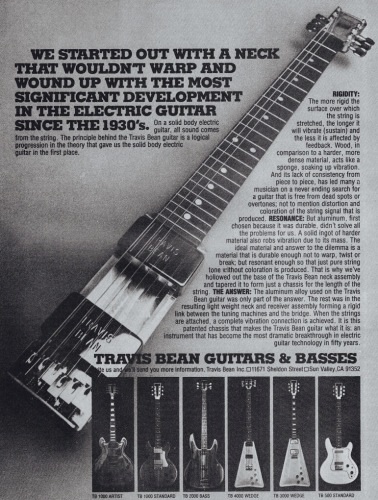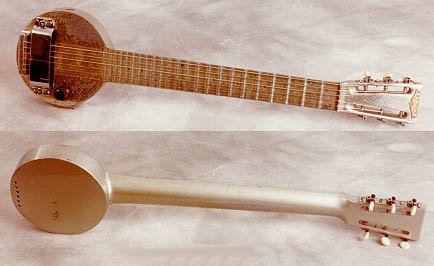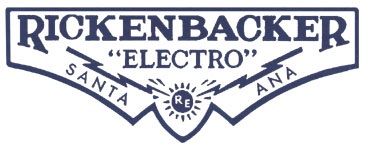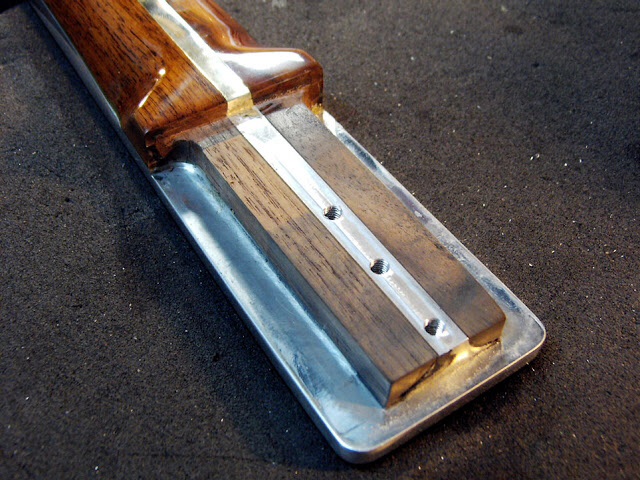I like seeing how instrument makers build on traditions and innovation. I knew nothing about Travis Bean because they went out of business in 1979, and I started working in music stores after that era. I'm guessing that the people who own the 3,000 or so guitars they produced want to hang onto them. I think it's easy to see why:

Even if it's to have in the trunk as an emergency oar, or to dig your car out of snowdrifts. Just kidding! I've been doing a lot of reading and looking at guitar porn, and man, those things were incredibly well-made. Even their cheapest line (the something-1000, I think) was made from koa. And the whole thing, from neck to tailpiece was one unit, milled out of a solid billet of aluminum. I love that he acknowledged (however obliquely) the pioneers who had come up with exactly the same thing in the 1930s, more or less:

1931 Rickenbacker "ELECTRO!"

I honestly don't think Travis Bean copied them. It's simply two approaches to the same thing. Since Rickenbacker's device came by way of Ed Dopera, the man who invented the Dobro, in the midst of a Hawaiian music craze, it was strictly intended to be an "electric table" approach. (It looks like it would be a dandy weapon in a bar fight, as well.) And like Travis Bean later, at some point Rickenbacker said; "hey, what if I add wood wings onto it so you could play it like a guitar? Is that what girls like?" You're right about Kramer, though. I've played a few aluminum-necked Kramers and they were very well made, but still neck-heavy. They didn't stay with aluminum long, anyway. Probably because aluminum necks, Marshall Plexis, those hot lights on MTV's TRL and all that hairspray was just an accident waiting to happen.

I think Kramer drove the aluminum thing into saplings and forced the wood to grow into the grooves? That's what I would have done.